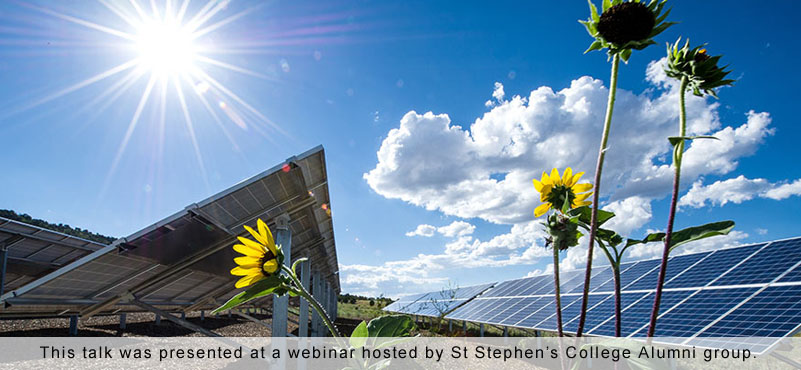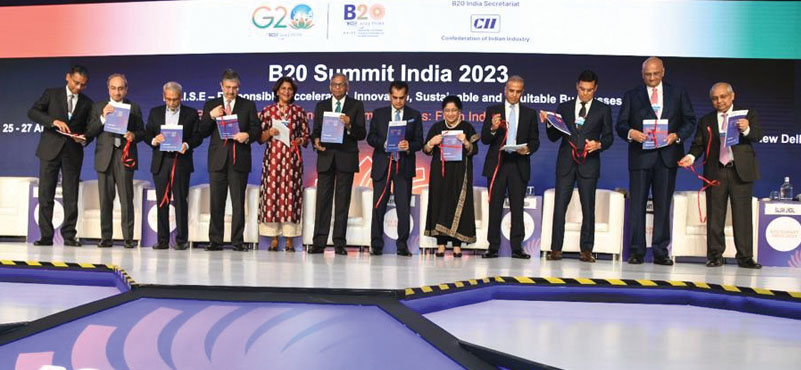GLOBAL PERSPECTIVE
The IMF’s WEO, July 2023 shows global growth is likely to fall from 3.5 per cent in 2022 to 3 per cent in both 2023 and 2024. The US economy expanded at 2.1 per cent in April-June, UK’s GDP increased by 0.4 per cent, Japan’s GDP expanded by 6 per cent and Germany’s adjusted GDP contracted by 0.2 per cent. China’s April-June GDP rose by 6.3 per cent because of the triple whammy of a worsening property slump, weak consumer spending and falling credit growth.
INDIA-AN OUTPERFORMER IN THE COMITY OF NATIONS
Against this disconcerting setting, India’s GDP rose by 7.8 per cent in Q1 of FY as compared to a growth of 6.1 per cent in the previous January-March quarter of fiscal 2022-23. This growth was spearheaded by consistent demand, higher activities in the services sector, and increased capital expenditure by the central and state governments.
While the services sector clearly out-performed, the sluggish growth in manufacturing was adversely affected by falling exports, and a deceleration in the construction sector. Domestic demand growth and private consumption and investment spending will be a key determinant of growth sustainability. Festive October-December demand will raise spending significantly. Capital formation, a proxy for investments, and private consumption expenditure, an indicator of consumption demand, rose by 8 per cent and 6 per cent in Q1 FY24, respectively. These had recorded higher growth rates of 20.4 per cent and 19.8 per cent, respectively, in the corresponding period a year ago. There is some evidence to suggest that the government’s capital expenditure push is “paying off” and is crowding in private investment. Similarly, the state governments also seem to be doing well.
Expansion of public digital platforms and path-breaking measures such as PM GatiShakti, the National Logistics Policy, and the Production-Linked Incentive schemes would boost manufacturing output. To be sure, a deceleration in the global economy and trade may hamper export growth. But it may be good for India in certain respects. The rural demand for FMCGs has increased especially for high-value goods. The same trend is evident for small towns, contributing to growth.
As a share of GDP, private consumption expenditure dropped to 57.3 per cent of GDP in April-June from 58.3 per cent in the year-ago period.
 There was, however, a contraction of 0.7 per cent in government expenditure in the first quarter this year — its share in GDP also decreased to 10.1 per cent of GDP from 11 per cent; exports also recorded a contraction of 7.7 per cent, while imports increased by 10 per cent.
There was, however, a contraction of 0.7 per cent in government expenditure in the first quarter this year — its share in GDP also decreased to 10.1 per cent of GDP from 11 per cent; exports also recorded a contraction of 7.7 per cent, while imports increased by 10 per cent.
The manufacturing sector’s growth is skewed more towards organised sector’s growth. This requires an accent on making the ongoing recovery more broad-based. Consumption demand could also be hit by surging inflation and weak external demand.
Five of the eight key sectors registered over 5 per cent growth in April-June, with two sectors recording a higher growth rate than the year-ago period — ‘financial, real estate and professional services’ at 12.2 per cent as against 8.5 per cent in the year-ago period, and ‘agriculture, forestry and fishing’ at 3.5 per cent as against 2.4 per cent.
Manufacturing grew at 4.7 per cent in April-June 2023 as against 6.1 per cent in April-June 2022, while mining and quarrying grew at 5.8 per cent, lower than 9.5 per cent a year ago. Construction sector grew at 7.9 per cent in April-June this year as against 16 per cent growth in the corresponding period last year.
EMERGING CONTOURS
The West is confronted by twin challenges of high inflation and slow growth and China by a consumer demand slowdown. But India is well poised for sustained growth because of the twin advantages of improving profitability of companies and higher capacity utilization together with a robust and well capitalized banking sector. Steady growth would foster stability in overseas flows and also promote higher domestic institutional investment providing some support to the Indian equity markets.
 As the Chief Economic Advisor V Anantha Nageswaran stressed, investment and consumer momentum will underpin solid growth prospects over the upcoming year. The private sector capital formation, supported by the Government’s capex push, is underway. These and other measures would significantly boost economic growth, employment and income gains for households.
As the Chief Economic Advisor V Anantha Nageswaran stressed, investment and consumer momentum will underpin solid growth prospects over the upcoming year. The private sector capital formation, supported by the Government’s capex push, is underway. These and other measures would significantly boost economic growth, employment and income gains for households.
Going ahead, there are concerns of erratic monsoon with India getting 36 per cent less rain than it usually gets in August making it the driest August in 122 years, July CPI inflation rising to 7.44 per cent, the lagged impact of interest rate hikes, weak trade activity, heightened political uncertainty, volatile global financial markets, likely slowing of Government capex and exports, geopolitical tensions and economic fragmentation. Hence GDP growth would moderate in the remaining three quarters of this financial year because of the base effect, deficient rainfall, high inflation and geo-political dynamics. But we are well and truly on a course to steady growth.
ABOUT THE AUTHORS
 Vipin Malik, Chairman, Infomerics Ratings, served on Boards of Reserve Bank of India and Bharatiya Reserve Bank Note Mudran Private Limited, Canara Bank, J&K Bank, etc. Author of several well-received books and several articles. He appears often on television debates on economy issues.
Vipin Malik, Chairman, Infomerics Ratings, served on Boards of Reserve Bank of India and Bharatiya Reserve Bank Note Mudran Private Limited, Canara Bank, J&K Bank, etc. Author of several well-received books and several articles. He appears often on television debates on economy issues.
 Dr. Manoranjan Sharma is Chief Economist, Infomerics, India. With a brilliant academic record, he has over 250 publications and six books. His views have been cited in the Associated Press,
Dr. Manoranjan Sharma is Chief Economist, Infomerics, India. With a brilliant academic record, he has over 250 publications and six books. His views have been cited in the Associated Press,
New York; Dow Jones, New York; International Herald Tribune, New York; Wall Street Journal, New York.




































